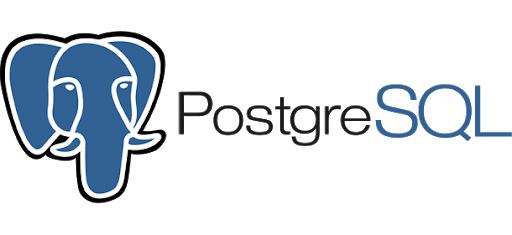Do you want to use PostgreSQL Analytics? Have you looked all over the internet to find a solution for it? If yes, then this blog will answer all your queries. With many cloud-based data warehouse services becoming popular, using a traditional relational database for your analytics is not a simple decision. In such a case, PostgreSQL is a great choice. Postgres provides an extensive set of querying capabilities, Foreign Data Wrapper, etc. In this post, you will explore the viability of using PostgreSQL analytics and the caveats that come with it.
Let’s start your learning about PostgreSQL analytics.
Table of Contents
Introduction to PostgreSQL

PostgreSQL is a popular, free, and open-source relational database that can be used for different types of workloads. Postgres provides querying abilities and windowing functions.
Its versatility makes it possible to be used as a transactional database as well as a data warehouse for analytics. With its origins dating back to 1986 and the strong community support that comes with it, Postgres boasts of high reliability, extensibility, and data integrity.
Postgres also supports a unique object-relational model, which is generally not found in counterparts like Postgres vs MySQL and MariaDB. This feature allows users to define custom data types if the already rich data types are not enough for the use case.
Key Features of PostgreSQL
Other than the standard features of a relational database that includes typical data types, transactional integrity, and querying layer, Postgres possesses some unique features that make it different from other databases in comparison. Let us look into these features as listed below:
- Conformance to SQL Standard: Postgres derives its strength from a comprehensive querying layer that conforms to the internationally accepted SQL standard as much as possible.
- Object Relational Model: Another feature of Postgres is its object-relational model that allows users to define custom data types and functions to deal with the custom-defined data types.
- Unique Indexing Mechanisms: Other than the traditional indexing mechanism, Postgres has support for expression index and partial index.
- Common Table Expressions or WITH Clause: Postgres allows you to define temporary tables that exist only for the lifetime of a query.
- Foreign Data Wrapper: This feature enables users to create data sources in Postgres based on external data sources like MySQL.
- Geospatial Database: Postgres provides unique features for handling geospatial data.
- Disaster Recovery and Replication: Postgres supports both physical and logical replication.
- Materialized Views: Materialized views are Postgres features that allow users to create a snapshot of tables in an alternate form suitable for specific queries.
- Window Functions: Window functions are functions that enable data processing over several rows based on clauses like OVER, GROUP BY, etc.
Ditch the manual process of writing long commands to connect your PostgreSQL and choose Hevo’s no-code platform to streamline your data migration.
With Hevo:
- Easily migrate different data types like CSV, JSON etc.
- 150+ connectors like PostgreSQL and Google Sheets(including 60+ free sources).
- Eliminate the need for manual schema mapping with the auto-mapping feature.
Experience Hevo and see why 2000+ data professionals, including customers such as Thoughtspot, Postman, and many more, have rated us 4.3/5 on G2.
Get Started with Hevo for FreeBenefits of Using PostgreSQL Analytics
Now that you have learned about the key features and the data types of Postgres, in this section, you will learn about the key benefits of PostgreSQL Analytics:
- The must-have feature of any analytics database is a querying layer of the fast querying performance. With good support for complex data types, windows functions, custom functions add custom data types, Postgres is behind no other database when it comes to this.
- There are many third-party extensions available to solve the shortcomings of Postgres. In the unfortunate event, if you find a feature missing, Postgres’s custom extension support and dynamic loading will provide you with a way out.
- Postgres’s ability to integrate with external data sources using Foreign Data Wrapper is a great help while using it as an analytics database where data comes in from all sorts of sources.
- Its ability to support textual data types, like JSON, XML, etc. and searching abilities over them makes it an ideal candidate while dealing with use cases that involving a mix of structured and unstructured data.
- Most software-as-a-service counterparts, like Redshift, have adopted Postgres Standard as their querying standard because of its popularity and conformance to SQL standard. Not only does it tell you about its versatility, but it also assures you that in case you want to move towards a SaaS database, you can do it without much changes to your queries.
- Postgres comes with great security features and access control mechanisms. It comes with columns and row-level security. Multi-factor authentication is also supported.
Setting Up PostgreSQL for Analytics
Optimizing PostgreSQL for analytics workloads involves configuring the database and structuring your data to handle large volumes of queries efficiently.
1. Indexing for Faster Query Performance
Indexes reduce the amount of data scanned during queries. Here’s how to implement them:
- B-Tree Index Example:
CREATE INDEX idx_sales_date ON sales(transaction_date);Use this for range queries, e.g., fetching transactions in a date range:
SELECT * FROM sales WHERE transaction_date BETWEEN '2024-01-01' AND '2024-12-31';- GIN Index for Full-Text Search
CREATE INDEX idx_product_desc ON products USING gin(to_tsvector('english', description));Query example:
SELECT * FROM products WHERE to_tsvector('english', description) @@ to_tsquery('analytics');- Partial Index Example:
CREATE INDEX idx_active_customers ON customers(customer_status) WHERE customer_status = 'active';2. Partitioning for Managing Large Datasets
Partitioning helps in handling large tables by dividing them into smaller chunks.
- Range Partitioning Example:
Create a partitioned table for sales data
CREATE TABLE sales (
transaction_id SERIAL,
transaction_date DATE NOT NULL,
amount NUMERIC
) PARTITION BY RANGE (transaction_date);Add partitions:
CREATE TABLE sales_2024 PARTITION OF sales FOR VALUES FROM ('2024-01-01') TO ('2025-01-01');- Query Example:
PostgreSQL will automatically target the relevant partition:
SELECT * FROM sales WHERE transaction_date = '2024-06-15';3. Configuration Settings for Analytical Queries
Adjust PostgreSQL settings for better performance:
- Increase Work Memory:
Edit postgresql.conf or run:
SET work_mem = ‘128MB’; - Enable Parallel Query Execution:
SET max_parallel_workers_per_gather = 4; - Optimize Effective Cache Size:
SET effective_cache_size = ‘4GB’;
4. Using Materialized Views
Materialized views store query results for faster retrieval.
- Create a Materialized View:
CREATE MATERIALIZED VIEW top_customers AS
SELECT customer_id, SUM(amount) AS total_spent
FROM sales
GROUP BY customer_id
ORDER BY total_spent DESC;- Refresh the View Periodically:
REFRESH MATERIALIZED VIEW top_customers;5. Leveraging Table Clustering
Reorder table data for better performance.
- Cluster a Table by Index:
CREATE INDEX idx_sales_date_cluster ON sales(transaction_date);
CLUSTER sales USING idx_sales_date_cluster;- After Clustering Query Example:
Sequential scans become faster for queries like:
SELECT * FROM sales WHERE transaction_date >= '2024-01-01';6. Monitoring and Optimization Tools
- Analyze Query Execution Plans:
EXPLAIN ANALYZE
SELECT * FROM sales WHERE transaction_date BETWEEN '2024-01-01' AND '2024-12-31';This shows execution details and highlights bottlenecks.
- Track Query Statistics:
Enable query logging in postgresql.conf:
shared_preload_libraries = 'pg_stat_statements'View the most expensive queries:
SELECT query, total_time, calls
FROM pg_stat_statements
ORDER BY total_time DESC;By implementing these strategies with the examples provided, you can ensure PostgreSQL performs efficiently for analytics.
Limitations of Using PostgreSQL Analytics
Even with all those benefits, Postgres is not without its faults and shortcomings. Some of the limitations of using PostgreSQL Analytics are as follows:
- Postgres is not efficient when it comes to Big Data. It is true when your data goes to TBs, and you have queries that process a big part of that data size.
- The horizontal scaling abilities of Postgres is limited. It means that if you want to scale your database, you may have to deal with complex procedures and downtime.
- Since it is free and open-source, it does not come with specific paid enterprise support. It may be a deal-breaker for some organizations who are used to databases like Oracle and SQLServer, that comes with the backing of enterprises. Some companies offer support packages for Postgres, but not at the level that can be provided by organizations like Microsoft.
- Postgres has the reputation for having complex procedures for upgrades that involves downtime. Recent versions of Postgres have solved this problem to an extent, but the fact remains, the upgrade path is not as smooth as other competitors like MySQL.
Conclusion
As evident from the prose above, Postgres makes a strong case for it to be used as your primary analytics database. Unless you have TBs of data and requires a database with horizontal scaling, there are few reasons why someone might get tempted to look over Postgres. In case you decide to go with Postgres, you will need an ETL framework like Hevo to move your data from different sources to Postgres.
Want to take Hevo for a ride? Sign Up for a 14-day free trial and simplify your ETL process. You can also have a look at our unbeatable pricing that will help you choose the right plan for your business needs!
Share your experience of using PostgreSQL Analytics in the comment section below.
FAQs
1. What are analytics functions in PostgreSQL?
Analytics functions in PostgreSQL, like SUM(), AVG(), ROW_NUMBER(), and RANK(), provide advanced data insights. They work as window functions to calculate aggregates and rankings over a defined set of rows without grouping data, ideal for reporting and trend analysis.
2. What is analytics DB for Postgres?
An analytics database for Postgres is a specialized PostgreSQL setup or extension (e.g., TimescaleDB, Citus) optimized for analytical workloads. These systems enhance PostgreSQL’s ability to handle large-scale data aggregation, real-time analytics, and complex queries efficiently.
3. How to use analyze in Postgres?
The ANALYZE command updates PostgreSQL’s query planner with statistics about table contents, improving query performance. Example:
ANALYZE my_table;










